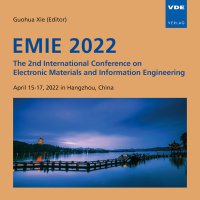Research on Multi-energy Complementary Clean DC Delivery Considering Sending-End Resources and the Matching Mode of Receiving-End Peak Load Regulation
Konferenz: EMIE 2022 - The 2nd International Conference on Electronic Materials and Information Engineering
15.04.2022 - 17.04.2022 in Hangzhou, China
Tagungsband: EMIE 2022
Seiten: 17Sprache: EnglischTyp: PDF
Autoren:
Feng, Shirui; Guo, Fei (Electric Power Planning and Engineering Institute, Beijing, China)
Hu, Jianbo (China Three Gorges Corporation, Wuhan, China)
Inhalt:
In order to achieve Chinese goals of “carbon emission peaking in 2030 and carbon neutrality in 2060” and "building a new power system with new energy as the main body", there shall be a profound change in the development trend of energy industry and a further improvement in the penetration rate of new energy. The clean hydropower cluster in Southwest China is an important base for clean power outgoing. The regulation and storage capacity of large-scale cascade hydropower may be utilized to bundle nearby wind and photovoltaic power stations for outgoing. With a typical hydropower multi-energy complementary base in southwest China as the object, this study proposes an annual power transmission curve optimization method, which takes into account both electric abandoned rate of sending ends and the power load matching rate of receiving ends, and based on the sequence matching mode of peak load regulation for the receiving-end power grid, further puts forward a daily power transmission curve optimization method for DC outgoing. Based on the optimized DC power transmission curve, this study has established a sending-end power grid system with water-wind-solar multi-energy complementary system as the core, and conducted a daily production time sequence simulation for the whole year, evaluated different wind-solar ratios for total scale, comprehensive abandoned electric rate, DC utilization hours and pooling cost, so as to give the optimal wind-solar ratio for each DC line. It is estimated that the combination operation capacity of hydropower stations for bundled wind-solar energies in southwest China can reach over 31-49 million kilowatts. Through a reasonable optimization of wind-solar power ratio considering the demand for sending-end resources and peak load regulation for receiving ends, the consumption level of new energy and the utilization efficiency of the outgoing channels can be improved effectively.


